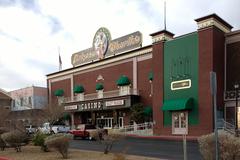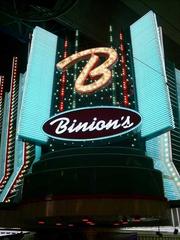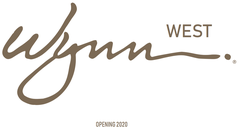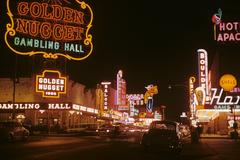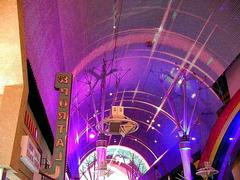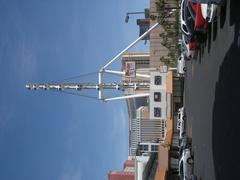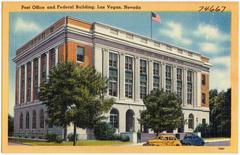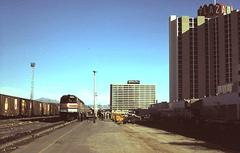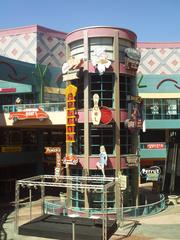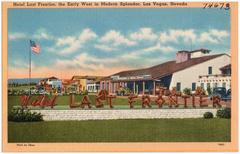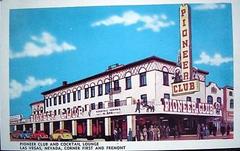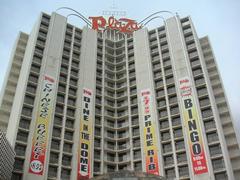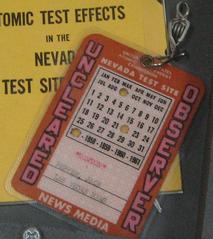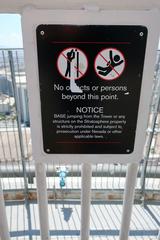Underground House Las Vegas: Visiting Hours, Tickets, and Visitor Guide
Date: 15/06/2025
Introduction
Nestled 26 feet beneath the Nevada desert, just east of the Las Vegas Strip, the Underground House Las Vegas is a spectacular relic of Cold War ingenuity and luxury survivalism. Conceived by businessman Girard B. “Jerry” Henderson in the 1970s, this subterranean mansion was designed not just as a fallout shelter, but as a fully equipped, comfortable home that could sustain its occupants in style. Today, it stands as a vivid time capsule, blending survivalist architecture with the opulence and eccentricity of 1970s Las Vegas.
Visitors to the Underground House experience a fusion of history, engineering marvel, and cultural symbolism. Tours offer rare access to its preserved interiors and innovative features, making it one of the most unique attractions in Las Vegas for those interested in architecture, Cold War history, and the city’s eclectic past (UNLV Special Collections; Wikipedia; Las Vegas Review-Journal; Atlas Obscura).
Table of Contents
- Cold War Origins and Vision
- Planning and Construction
- Architectural Features and Innovations
- Life and Legacy of the Hendersons
- Ownership, Preservation, and Visitor Access
- Historical and Cultural Significance
- Visual and Interactive Media
- Frequently Asked Questions (FAQ)
- Visit Planning and Recommendations
- References and Further Reading
Cold War Origins and Vision
The Underground House was born from the anxieties of the Cold War era, when the threat of nuclear conflict loomed large. Henderson, influenced by the aftermath of the Cuban Missile Crisis and the wider fallout shelter movement, envisioned a home that was both a secure refuge and a model for luxurious, self-sufficient living underground. He aimed to demonstrate that sheltering from catastrophe did not mean abandoning comfort or style (UNLV Special Collections; House & History).
Planning and Construction
After relocating to Las Vegas in 1969, Henderson collaborated with Oswald Gutsche of Alexander Dawson Inc. and contractor Frank Zupancic to realize his vision. Inspired by the work of underground architecture pioneer Jay Swayze, construction began in 1973 and finished in 1978. The house, built 26 feet below ground at 3970 Spencer Street, required reinforced concrete, steel, and advanced ventilation and climate systems. The total cost remains undisclosed but is believed to have reached several million dollars (Wikipedia; Showcaves; Review-Journal).
Architectural Features and Innovations
Simulated Natural Environment
The Underground House spans nearly 15,000 square feet, with the main residence occupying about 6,000 square feet. Artificial landscaping, complete with faux trees, rocks, and murals by artist Jewel Smith, recreates outdoor scenes from Henderson’s life. These immersive murals depict vistas from New Zealand, Colorado, Los Angeles, and New York (Wikipedia).
Lighting System
A sophisticated system simulates the full spectrum of a day, from sunrise to starlit night, enhancing the psychological comfort of living without windows (House & History).
Amenities
The house features an indoor swimming pool, two hot tubs, sauna, dance floor and bar, billiard room, mini-golf, barbecue, and seating for over 120 guests. All amenities were designed to blend survival with entertainment (Designboom; Showcaves).
Utilities and Self-Sufficiency
Equipped with multiple HVAC units, a 1,000-gallon water tank, backup generator, and connections to city utilities, the home was built for true self-sufficiency and comfort (Designboom; Review-Journal).
Life and Legacy of the Hendersons
Jerry and Mary Henderson lived in the Underground House from 1978 until Jerry’s death in 1983, hosting social gatherings and embracing an unusual yet luxurious lifestyle. After Jerry’s passing, Mary built a smaller above-ground home and left the underground residence largely intact, preserving its period décor and atmosphere (House & History; Review-Journal).
Ownership, Preservation, and Visitor Access
Ownership of the Underground House has changed several times, with the property passing into the hands of the Society for the Preservation of Near Extinct Species, dedicated to preservation and public awareness. Occasional public tours and events are organized in partnership with organizations like the Nevada Preservation Foundation, ensuring the legacy of the Underground House remains accessible (Review-Journal).
Visiting Hours and Tickets
- Tours are not held daily; they are scheduled periodically as private events or through special preservation efforts.
- Booking is required in advance, often via the official Underground House website, Photo Tours Vegas, or the Nevada Preservation Foundation.
- Pricing varies; group packages start around $500, with individual rates for larger groups (Las Vegas Advisor; Photo Tours Vegas). Tours often last 60–90 minutes.
Location and Accessibility
Located at 3970 Spencer Street, Las Vegas, access is via stairs or an elevator. The house is accessible by car, with parking available on-site or nearby. While some areas are wheelchair accessible, prospective visitors with mobility concerns should confirm accommodations when booking (Las Vegas Advisor).
Nearby Attractions
Pair your Underground House visit with other Las Vegas historical sites such as the Neon Museum, Mob Museum, Atomic Museum, and Fremont Street walking tours for a broader cultural experience (Brews and Clues).
Historical and Cultural Significance
The Underground House is a striking symbol of Cold War America, blending survivalist technology with luxury and eccentricity. Its preservation provides insight into 1970s psychology, design, and the era’s unique blend of fear and optimism. It also serves as a case study in sustainable, resilient architecture, offering lessons for modern urban design (Showcaves; Smithsonian Magazine).
Visual and Interactive Media
Explore the Underground House through virtual tours, photo galleries, and videos on the official website. Images feature the pool, sky murals, and 1970s décor, all with descriptive alt text for accessibility.
Frequently Asked Questions (FAQ)
Q: How can I book tickets for tours?
A: Reserve tickets through the official website, authorized tour operators, or the Nevada Preservation Foundation. Advance booking is required due to limited capacity.
Q: Are tours available year-round?
A: Tours are periodic and often held during special events or by appointment. Check official channels for current schedules.
Q: Is the Underground House accessible for people with disabilities?
A: There is elevator access, but some areas may be challenging for wheelchair users. Contact organizers ahead of time for specific needs.
Q: Can I take photographs?
A: Photography is generally allowed during tours, but commercial use requires advance permission.
Q: Where is the Underground House located?
A: 3970 Spencer Street, Las Vegas. The exact address may be provided only after booking for privacy reasons.
Q: What should I bring?
A: Comfortable shoes, a camera, and government-issued ID. Check with your tour operator for specifics.
Visit Planning and Recommendations
- Book early: Tours are limited and fill up quickly.
- Accessibility: Notify the tour operator of any mobility needs.
- Combine with other sites: Nearby museums and historical attractions enrich your experience.
- Prepare for the environment: The underground setting may be cooler—bring a jacket if needed.
- Respect guidelines: The site is private property; follow all tour rules and etiquette.
References and Further Reading
- UNLV Special Collections
- Wikipedia
- Las Vegas Review-Journal
- Atlas Obscura
- Smithsonian Magazine
- Las Vegas Advisor
- Photo Tours Vegas
- Brews and Clues
- Showcaves
- Designboom
- House & History
- Money.com
- Prepper Press
Plan your visit today to experience a remarkable chapter of Las Vegas history beneath the surface. Book your tickets in advance, explore with curiosity, and join the ongoing story of this extraordinary underground marvel.
